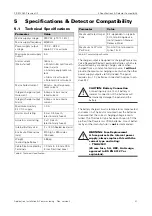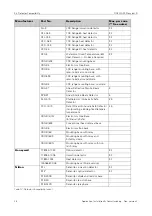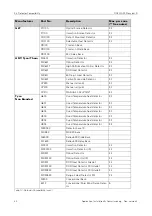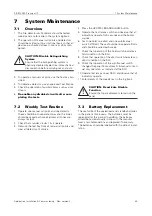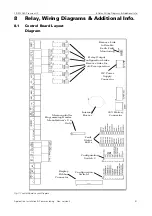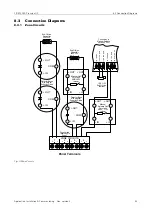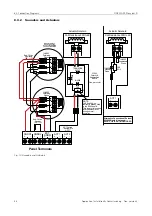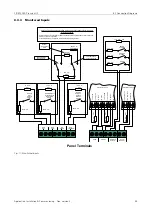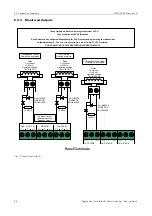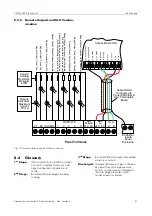
FIRECLASS Prescient III
6 Panel Installation & Commissioning
Application, Installation & Commissioning Doc. version 2
43
6
Panel Installation & Commissioning
The control panel must be installed by suitably qualified
technicians familiar with the installation of fire detection
& extinguishing systems. In addition, it is recom-
mended to refer to the following information:
1
Current edition of the IEE wiring regulations.
2
Current edition of BS5839-1 or the installation stand-
ards for the relevant country.
3
Any site-specific requirements.
4
Any field device installation instructions.
5
Any data sheet provided for the installation of Intrin-
sically Safe devices.
Prior to commencing installation of the control panel,
ensure that adequate precautions are taken to prevent
damage to the sensitive electronic components on the
control board due to electrostatic discharge. You should
discharge any static electricity you may have accumu-
lated by touching a convenient earthed object such as
an unpainted copper radiator pipe. You should repeat
the process at regular intervals during the installation
process, especially if you are required to walk over car-
pets.
The panel must be located in a clean, dry position, which
is not subject to shock or vibration and at least 2 metres
away from pager systems or any other radio transmit-
ting equipment. The operating temperature range is -
5 ºC to +40 ºC; maximum humidity is 95%.
IMPORTANT SAFETY CONSIDERATIONS FOR
BATTERIES:
WARNING: Installation Compliance
Read this section completely before
commencing installation.
DANGER: Battery Terminals
Batteries are electrically live at all
times, take great care never to short
circuit the battery terminals.
WARNING: Lifting Battery
Batteries are often heavy; take great
care when lifting and transporting
batteries. For weights above 24 kilos,
lifting aids should be used.
DANGER: Do NOT Tamper with
Battery
Do NOT attempt to remove the
battery lid or tamper with the internal
workings of the battery. Electrolyte is
a highly corrosive substance, and
presents significant danger to
yourself and to anything else it
touches. In case of accidental skin or
eye contact, flush the affected area
with plenty of clean, fresh water and
seek immediate medical attention.
Valve Regulated Lead Acid (VRLA)
Batteries
Valve Regulated Lead Acid (VRLA) batteries
are “low maintenance”, requiring no electro-
lyte top-up or measurement of specific
gravity.
WARNING: Battery Cleaning
Only clean the battery case with a
cloth that has been soaked or
dampened with distilled water.
Do not use organic solvents (such
as petrol, paint thinner, benzene or
mineral spirits) or other materials
that can substantially weaken the
case.
Do not use a dry cloth as this will
generate static electricity, which in
turn may lead to an explosion.



